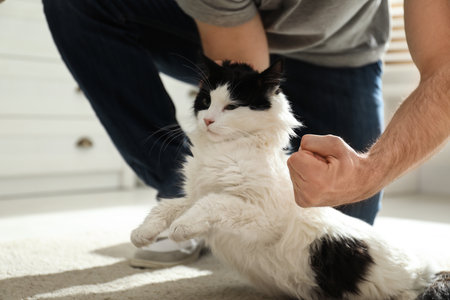Understanding Small Pets’ Dietary Needs
Across the United States, small pets like hamsters, guinea pigs, rabbits, gerbils, and mice have become beloved family members. Each of these animals brings unique personality traits to a household, but they also have very different nutritional needs. It’s common for pet owners to assume that all small animals can share similar treats or snacks, but this is a widespread misconception that can lead to health problems.
For example, rabbits are strict herbivores and require high-fiber diets rich in hay and leafy greens. In contrast, hamsters and gerbils are omnivorous, needing a mix of seeds, grains, vegetables, and occasional proteins. Guinea pigs have their own special requirement: they cannot synthesize vitamin C and must get it from fresh produce or fortified pellets. Feeding inappropriate treats—like sugary fruit to hamsters or iceberg lettuce to rabbits—can cause digestive upset or even serious illness.
Understanding the species-specific dietary requirements of your small pet is the first step toward providing safe and healthy treats. By recognizing that what works for one animal may be harmful to another, you lay the groundwork for responsible pet ownership and happier, healthier companions.
Safe and Healthy Treat Options
When it comes to rewarding your small pets, choosing treats that are both safe and nutritious is essential. American pet owners have plenty of options, from fresh produce to specially formulated store-bought treats. Here’s how you can treat your furry friends while supporting their well-being.
Fresh Fruits and Vegetables
Many small pets, such as rabbits, guinea pigs, hamsters, and gerbils, thrive on a diet supplemented with fresh fruits and vegetables. However, not every fruit or veggie is suitable—some can be harmful if fed in excess or at all. The table below highlights some safe choices commonly found in U.S. grocery stores:
| Treat | Suitable For | Feeding Tip |
|---|---|---|
| Carrot Slices | Rabbits, Guinea Pigs, Hamsters | High in sugar; offer sparingly |
| Apple (seedless) | Rabbits, Guinea Pigs, Hamsters | Remove seeds; small pieces only |
| Kale | Rabbits, Guinea Pigs | Rich in vitamins; rotate with other greens |
| Cucumber | All small pets | Hydrating; moderate amounts recommended |
| Blueberries | Hamsters, Gerbils, Rabbits (occasionally) | Treat due to sugar content; limit quantity |
Store-Bought Treats Formulated for Small Pets
If you prefer the convenience of ready-made treats, look for products specifically labeled for your type of pet. Many brands in the United States offer treats free from artificial colors and added sugars. Some popular and reputable options include:
- Oxbow Simple Rewards: Made with real fruits and veggies without unnecessary fillers.
- KAYTEE Timothy Biscuits: High in fiber to support digestive health.
- Sherwood Pet Health Cookies: All-natural ingredients tailored for rabbits and guinea pigs.
- Vitakraft Drops: Yogurt-based treats suitable for hamsters and gerbils (give sparingly).
Key Considerations When Choosing Store-Bought Treats:
- Avoid treats with artificial sweeteners or colors.
- Check the ingredient list for preservatives or high sugar content.
- Select treats made by trusted U.S. brands to ensure safety standards are met.
The Bottom Line for American Pet Owners:
Treats should always be offered in moderation and never replace a balanced staple diet. Rotate treat types to keep things interesting for your pet and always monitor for any signs of digestive upset or allergies after introducing new foods. By sticking with fresh produce and reputable commercial options, you’ll help your small pet stay healthy—and happy!

3. Treats to Avoid: What’s Harmful or Unhealthy
When it comes to pampering your small pets, knowing what not to feed them is just as important as knowing which treats are safe. Many well-meaning pet owners in the United States mistakenly offer snacks that can actually harm their furry friends. Here’s a straightforward guide on ingredients and foods you should always keep away from your small pets.
Common Harmful Ingredients
Some foods that seem harmless—or even healthy—for humans can be dangerous for small pets like hamsters, guinea pigs, rabbits, and mice. Sugar is a big offender. Treats containing added sugar, chocolate, honey, or syrup can lead to obesity, diabetes, and digestive problems. Likewise, salt and artificial flavorings found in many processed snacks are tough on small animals’ sensitive systems and can cause dehydration or organ damage.
Popular but Unsafe Foods in the U.S.
It’s common in American households to share bites of fruit, vegetables, or bread with pets—but certain options are off-limits. Avocado, for example, contains persin, which is toxic to birds and many small mammals. Onions, garlic, and chives—sometimes found in seasoned crackers—can cause blood disorders in small pets. Dairy products, such as cheese or yogurt drops marketed for rodents or rabbits, often cause digestive upset since most small pets are lactose intolerant.
Avoid These Store-Bought Treats
Many commercially available treats in the U.S., especially brightly colored “yogurt drops,” seed sticks with honey glaze, and cereal-based snacks contain high levels of sugar, fat, or artificial dyes. While they may look appealing on store shelves or attractively packaged online, these treats can lead to long-term health issues like dental disease and obesity.
The Dangers of Human Food
Feeding table scraps—even seemingly healthy ones like chips, cookies, or peanut butter—should be avoided. These items are usually too rich in fats, salt, or additives for small pets’ delicate digestive tracts. Even seemingly healthy produce like iceberg lettuce offers little nutrition and can cause diarrhea due to its high water content.
Key Takeaway
Always check ingredient labels and stick to treats specifically formulated for your pet’s species. When in doubt, consult your veterinarian before introducing new foods. By steering clear of unsafe options commonly found in American kitchens and pet stores, you’ll protect your small pet’s health and happiness.
4. How to Introduce Treats: Proper Timing and Portion Control
Introducing treats to your small pet’s routine isn’t just about giving them something tasty—it’s about building healthy habits and ensuring their wellbeing. Here’s how you can incorporate treats safely, following best practices that align with what’s safe, healthy, and beneficial for your furry friends in the U.S.
Best Practices for Giving Treats
- Start Slow: When introducing a new treat, begin with a tiny amount. This helps you monitor your pet for any signs of digestive upset or allergies.
- Consistency is Key: Give treats at the same time each day—after training sessions or as a reward for good behavior. This builds positive associations and prevents begging.
- Use as Motivation: Treats work great as incentives during training, encouraging behaviors like using a litter box or coming when called.
Timing Matters
The timing of treats can influence your pet’s behavior and health. Avoid offering treats right before meals or bedtime. Instead, use them mid-day or after active playtime to reinforce good habits.
Portion Control: Avoiding Overfeeding
It’s easy to spoil your small pet, but too many treats can lead to obesity and health issues. Follow the 10% Rule: treats should make up no more than 10% of your pet’s daily caloric intake. Here’s a quick guide to help you portion treats appropriately:
| Small Pet Type | Recommended Treat Portion Size (per day) | Example Healthy Treat |
|---|---|---|
| Hamsters & Gerbils | 1-2 pea-sized pieces | Diced apple or carrot |
| Rabbits & Guinea Pigs | 1-2 tablespoons fresh greens or fruit | Kale, bell pepper, blueberry |
| Ferrets | 1-2 small pieces of cooked egg or meat | Bite-sized chicken or turkey |
| Mice & Rats | 1 teaspoon fruit or veg; 1-2 small seeds/nuts (rarely) | Cucumber slice, sunflower seed (occasional) |
Tips to Build Healthy Habits with Treats
- Rotate Treat Types: Offer a variety of healthy options to prevent boredom and ensure balanced nutrition.
- Avoid Human Food: Stick to pet-safe foods; avoid chocolate, caffeine, salty snacks, and processed foods commonly found in American households.
- Track Intake: Keep a simple log (on your phone or a notepad) to track what and how much you’re offering each week.
- Create Enrichment: Hide treats in puzzle toys or scatter them around the enclosure to encourage natural foraging behaviors.
The Bottom Line on Timing and Portions
Treats should always be special—not an everyday staple. By focusing on timing and careful portion control, you’ll keep your small pets happy, healthy, and motivated while avoiding common pitfalls like overfeeding or unhealthy snacking habits.
5. DIY Treat Recipes and Creative Ideas
Why Make Your Own Small Pet Treats?
Homemade treats are a great way to bond with your small pets and ensure you know exactly what they’re eating. Making treats at home also allows you to skip unnecessary additives, sugars, and preservatives often found in store-bought options. Plus, it’s fun and surprisingly simple!
Simple, Vet-Approved Recipes for Small Pets
For Rabbits & Guinea Pigs: Fresh Veggie Bites
- Ingredients: 1 small carrot, 1/4 cup fresh parsley, 1/4 cup rolled oats, water as needed.
- Steps:
- Grate the carrot and finely chop the parsley.
- Mix with rolled oats in a bowl.
- Add a few drops of water until the mixture sticks together.
- Mold into tiny balls (about the size of a marble).
- Place on a baking sheet lined with parchment paper and bake at 325°F for 15 minutes.
For Hamsters & Gerbils: Nutty Banana Chips
- Ingredients: 1 ripe banana, 1 teaspoon unsalted peanut butter (NO xylitol), pinch of chia seeds (optional).
- Steps:
- Slice banana into thin rounds.
- Spread a tiny dab of peanut butter on each slice.
- Sprinkle with chia seeds if desired.
- Freeze slices for 30 minutes for a cool treat or serve fresh.
For Mice & Rats: Apple-Cinnamon Nibbles
- Ingredients: 1/2 apple (finely diced), 1 tablespoon plain oats, dash of cinnamon (not nutmeg!), water as needed.
- Steps:
- Mix apple pieces and oats in a bowl.
- Add cinnamon and just enough water to make a sticky mix.
- Spoon pea-sized drops onto parchment paper.
- Bake at 325°F for about 10 minutes until slightly golden.
Creative Ideas to Keep Treat Time Exciting
- Create “foraging puzzles” by hiding treats inside crumpled paper or cardboard tubes. This encourages natural behaviors like sniffing and digging.
- Add variety by rotating different safe fruits or veggies each week. Always introduce new foods slowly to avoid tummy troubles.
Action Tips for American Pet Owners
- Always double-check that ingredients are safe for your specific pet species—some common foods can be toxic!
- Treats should make up less than 10% of your pet’s total diet.
- If your pet has dietary restrictions or health conditions, consult your vet before offering new homemade treats.
With these easy DIY recipes and creative serving ideas, you can delight your small pets while keeping their health front and center—just like savvy American pet parents do!
6. Recognizing Health Benefits and Risks
How to Monitor Your Pet’s Reaction to Treats
After introducing a new treat, pay close attention to your small pet’s behavior and physical health. Start with a tiny amount and watch for changes such as increased energy, excitement, or digestive issues like loose stool. For example, if your hamster tries a new seed mix, observe if it remains active and alert or shows signs of discomfort. Keep a simple log of what you offer and how your pet responds, making it easier to spot patterns over time.
Benefits to Expect from Healthy Treats
Safe and nutritious treats can support your pet’s well-being in several ways. Fresh veggies for rabbits or fortified biscuits for guinea pigs may boost their immune system, improve coat condition, or even encourage natural chewing behaviors that keep teeth healthy. Many American pet owners notice their animals become more interactive when they receive treats as part of positive reinforcement during training or playtime.
Red Flags: When to Be Concerned
Look out for warning signs after giving treats: persistent diarrhea, vomiting, loss of appetite, lethargy, or unusual scratching could indicate an allergy or intolerance. If your ferret suddenly becomes withdrawn after trying a new snack, stop offering it immediately.
When to Consult a Veterinarian
If adverse symptoms last more than 24 hours or worsen quickly, contact your vet as soon as possible. Bring the treat packaging with you if you visit the clinic; knowing the exact ingredients can help the vet diagnose any problems faster. Remember, American veterinarians are familiar with common small pet treat brands and can give guidance tailored to your region’s products.
By being observant and proactive, you’ll ensure treat time remains safe and beneficial for your small pets—keeping them happy, healthy, and thriving.


